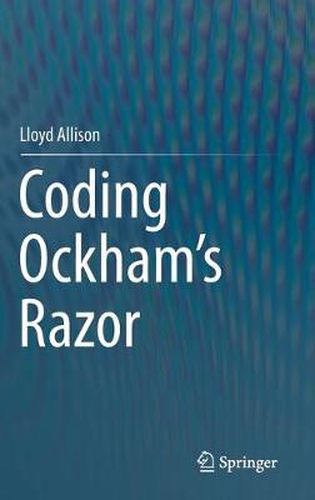Readings Newsletter
Become a Readings Member to make your shopping experience even easier.
Sign in or sign up for free!
You’re not far away from qualifying for FREE standard shipping within Australia
You’ve qualified for FREE standard shipping within Australia
The cart is loading…






This title is printed to order. This book may have been self-published. If so, we cannot guarantee the quality of the content. In the main most books will have gone through the editing process however some may not. We therefore suggest that you be aware of this before ordering this book. If in doubt check either the author or publisher’s details as we are unable to accept any returns unless they are faulty. Please contact us if you have any questions.
This book explores inductive inference using the minimum message length (MML) principle, a Bayesian method which is a realisation of Ockham’s Razor based on information theory. Accompanied by a library of software, the book can assist an applications programmer, student or researcher in the fields of data analysis and machine learning to write computer programs based upon this principle.
MML inference has been around for 50 years and yet only one highly technical book has been written about the subject. The majority of research in the field has been backed by specialised one-off programs but this book includes a library of general MML-based software, in Java. The Java source code is available under the GNU GPL open-source license. The software library is documented using Javadoc which produces extensive cross referenced HTML manual pages. Every probability distribution and statistical model that is described in the book is implemented and documented in the software library. The library may contain a component that directly solves a reader’s inference problem, or contain components that can be put together to solve the problem, or provide a standard interface under which a new component can be written to solve the problem.
This book will be of interest to application developers in the fields of machine learning and statistics as well as academics, postdocs, programmers and data scientists. It could also be used by third year or fourth year undergraduate or postgraduate students.
$9.00 standard shipping within Australia
FREE standard shipping within Australia for orders over $100.00
Express & International shipping calculated at checkout
This title is printed to order. This book may have been self-published. If so, we cannot guarantee the quality of the content. In the main most books will have gone through the editing process however some may not. We therefore suggest that you be aware of this before ordering this book. If in doubt check either the author or publisher’s details as we are unable to accept any returns unless they are faulty. Please contact us if you have any questions.
This book explores inductive inference using the minimum message length (MML) principle, a Bayesian method which is a realisation of Ockham’s Razor based on information theory. Accompanied by a library of software, the book can assist an applications programmer, student or researcher in the fields of data analysis and machine learning to write computer programs based upon this principle.
MML inference has been around for 50 years and yet only one highly technical book has been written about the subject. The majority of research in the field has been backed by specialised one-off programs but this book includes a library of general MML-based software, in Java. The Java source code is available under the GNU GPL open-source license. The software library is documented using Javadoc which produces extensive cross referenced HTML manual pages. Every probability distribution and statistical model that is described in the book is implemented and documented in the software library. The library may contain a component that directly solves a reader’s inference problem, or contain components that can be put together to solve the problem, or provide a standard interface under which a new component can be written to solve the problem.
This book will be of interest to application developers in the fields of machine learning and statistics as well as academics, postdocs, programmers and data scientists. It could also be used by third year or fourth year undergraduate or postgraduate students.